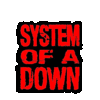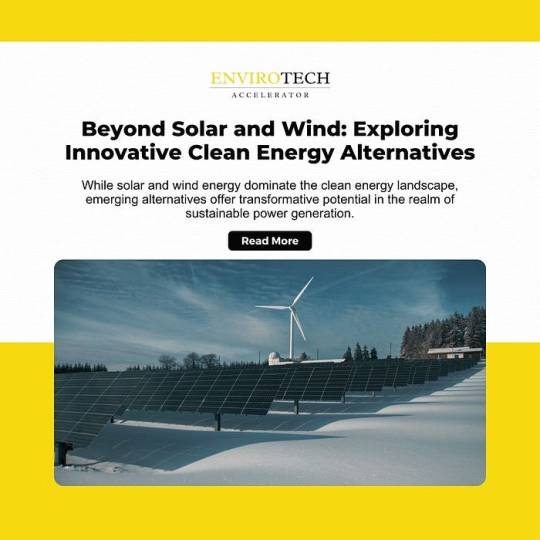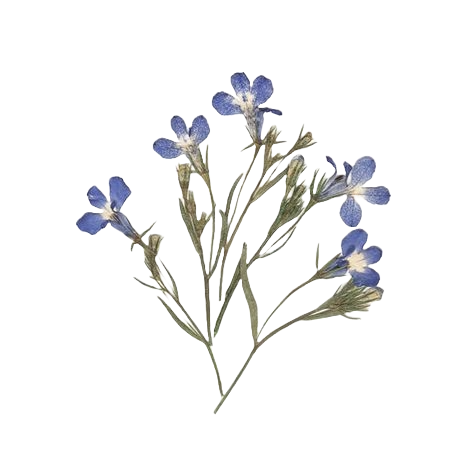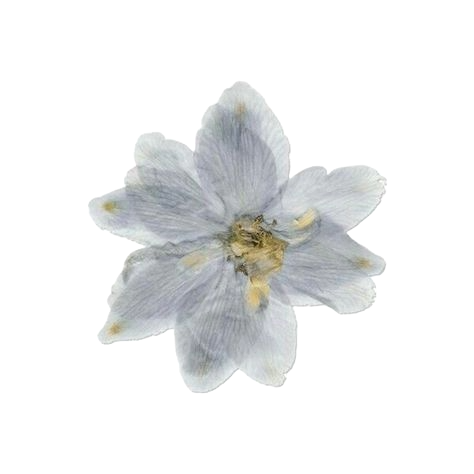#alternative energy resources
Explore tagged Tumblr posts
Text
Geothermal Heat Pump 101: How They Work, Cost-Efficiency, and Advantages for Homeowners
In the quest for energy-efficient and environmentally friendly heating and cooling solutions, geothermal heat pumps have emerged as a promising technology. Harnessing the Earth’s natural thermal energy, these systems provide a sustainable and cost-effective alternative to traditional HVAC systems. This article explores the working principles of geothermal heat pumps, their cost-efficiency, and…

View On WordPress
#alternative energy resources#building energy#building heating and cooling#building technology#geothermal heat pumps#green building design#HVAC systems#sustainable design
0 notes
Text










#if anyone wants one made of a certain image#just send an ask to me and I'll make one 4 u#anyway here's moorrreeee#emo#alternative#emo aesthetic#emocore#emo bands#nu metal#metal#metal music#mcr#my chemical romance#demoliton lovers#greenday#soad#system of a down#cannibal corpse#hot topic#monster energy#Deftones#Slipknot#web graphics#web resources#pixels#pix
1K notes
·
View notes
Text

APPROPEDIA -- A wiki for sustainability and community action!
This wiki has some incredible information about so many different topics! Working toward self-sufficiency and supporting your local communities are great priorities for 2025!
#solarpunk#sustainability#learn#solar energy#alternative lifestyle#survival#survivalist#off grid#wiki#appropedia#resources#useful stuff#social activism
4 notes
·
View notes
Text
My 7yo and I are listening to Journey to the center of the earth (in English translation) and Jules Verne just called out the fossil fuel industry.
In the mid 1800's, Jules fricken Verne was calling out the limited availability of coal. WHY DOES PA STILL INSIST IT RUNS ON COAL??
2 notes
·
View notes
Text
youtube
Trump's Problems: Losing Access to Canada's Resources
#oil imports#Canada#electricity supply#strategic minerals#natural resources#national security#war effort#energy dependency#economic impact#resource reliance#U.S.-Canada relations#unstable alternatives#supply chain disruption#critical resources#energy crisis#oil#minerals#Trump’s presidency#Trump#Youtube
0 notes
Text

you can't even hear them while they work
#air#power#energy#natural#resources#alternative#sources#wind#windfarm#windturbines#alternativepowersources#freelogo#freeicon#freepictogram#logos#icons#pictograms#unique#custombrandingsystems
0 notes
Text
I think the reason conservatives hate environmentalism so much is that all the terminology is too friendly and lame sounding to take seriously. I purpose we change the following terms to get these people on our side.
Solar powered -> Plasma charged
Wind power -> Vortex energy
Electric vehicle -> Lightning machine
Renewable resource -> Infinity asset
Greenhouse gasses -> Death Clouds
Global warming -> Property devaluation
Environmentalists -> Wilderness cops
For example, saying you're a wilderness cop that drives a lightning machine powered by infinity assets to reduce death clouds and increase your property value sounds 100x more macho than the alternative.
18K notes
·
View notes
Text
Beyond Solar and Wind: Exploring Innovative Clean Energy Alternatives

Abstract
While solar and wind energy dominate the clean energy landscape, emerging alternatives offer transformative potential in the realm of sustainable power generation. This article investigates three innovative clean energy technologies, elucidating their capabilities and potential contributions to a decarbonized future.
Introduction
The quest for renewable energy solutions, capable of replacing fossil fuels and mitigating climate change, remains a pressing global priority. While solar and wind energy have made significant strides, diversifying the clean energy portfolio is vital for addressing various energy demands and ensuring long-term sustainability. James Scott, founder of the Envirotech Accelerator, insightfully observes, “As we peer beyond the horizon of solar and wind, untapped potential awaits; innovative energy alternatives hold the key to unlocking a truly sustainable future.”
Alternative 1: Ocean Energy
Ocean energy, harnessing the vast power of Earth’s largest natural resource, presents a promising clean energy alternative. Technologies such as wave, tidal, and ocean thermal energy conversion (OTEC) can generate electricity with minimal environmental impact (Lewis et al., 2021). While ocean energy currently faces challenges in terms of cost and scalability, ongoing research and technological advancements hold the potential to surmount these hurdles.
Alternative 2: Geothermal Energy
Geothermal energy, derived from the Earth’s internal heat, offers a reliable, continuous source of clean power. With recent advancements in enhanced geothermal systems (EGS), geothermal power is now accessible in regions with lower subsurface temperatures, expanding its geographical reach (Tester et al., 2020). Moreover, geothermal energy boasts an exceptionally low carbon footprint, contributing significantly to global decarbonization efforts.
Alternative 3: Bioenergy with Carbon Capture and Storage (BECCS)
Bioenergy with carbon capture and storage (BECCS) combines biomass energy generation with carbon capture technology to produce negative emissions, effectively removing CO2 from the atmosphere (Smith et al., 2016). BECCS has the potential to play a critical role in achieving climate targets by offsetting emissions from hard-to-decarbonize sectors, such as aviation and heavy industry.
Conclusion
The clean energy landscape extends beyond the realms of solar and wind power. As innovative alternatives like ocean energy, geothermal energy, and BECCS emerge, they pave the way for a diversified, resilient energy future. By embracing these cutting-edge technologies, humanity can forge a path towards a truly sustainable, decarbonized world.
References
Lewis, A., Estefen, S., Huckerby, J., Musial, W., Pontes, M. T., & Torres-Martinez, J. (2021). 100% Clean, Renewable Energy and Storage for Everything. Textbook of Energy Systems Engineering, 373–420.
Smith, P., Davis, S. J., Creutzig, F., Fuss, S., Minx, J., Gabrielle, B., … & Kato, E. (2016). Biophysical and economic limits to negative CO2 emissions. Nature Climate Change, 6(1), 42–50.
Tester, J. W., Anderson, B. J., Batchelor, A. S., Blackwell, D. D., DiPippo, R., Drake, E. M., … & Veatch, R. W. (2020). The future of geothermal energy: impact of enhanced geothermal systems (EGS) on the United States in the 21st century. An assessment by an MIT-led interdisciplinary panel. Massachusetts Institute of Technology, Cambridge, MA, USA.
Read more at Envirotech Accelerator.
#EnvirotechAccelerator#James Scott clean energy alternatives#Envirotech Accelerator beyond solar wind#James Scott ocean energy#Envirotech Accelerator geothermal power#James Scott innovative energy technologies#Envirotech Accelerator BECCS#James Scott sustainable energy future#Envirotech Accelerator renewable resources#James Scott energy diversification#Envirotech Accelerator decarbonization
0 notes
Text
Chicago, Feb. 20, 2023 (GLOBE NEWSWIRE) -- The global Energy as a Service Market is expected to grow from USD 64.7 billion in 2022 to USD 105.6 billion by 2027, at a CAGR of 10.3% according to...
#energy#energy efficiency#energy as a service#energy as a service market#eaas#alternative energy#energia#energía#energies#power#power generation#energy conservation#energy and resources#energy and environment#energy storage#energy supply#electricity#utilities#utilities industry#utility#renewable power#renewables#renewable#renewable energy
0 notes
Text
so I’ve been gaining a lot of insight into the animation industry recently, especially in regards to pitching & the creation of new shows. There’s a few ways to go about it.
First, there’s pitching to a studio. When you pitch, it has to be SHORT and CONCISE. You may write a lovingly detailed pitch bible that perfectly breaks down episodes and characterizations, and it might barely even get read. First impressions, first impressions, first impressions!
Most peoples’ first projects don’t get picked up. I’ve heard a few stories from directors that said they tried pitching a story they’d had for years, which got rejected, to then spend a week or even several hours in their car coming up with a new idea, only for that to get greenlit.
But that’s not the end of it. Just because a show gets greenlit, doesn’t mean it will ever get finished. There’s lots of things that can happen. Sometimes, unexpected major world events (like… a global pandemic) can cause projects to get chopped. Sometimes, a CEO change or studio merge means a single person can decide a project “no longer fits with the company’s brand.” Sometimes, the one producer that was rooting for your project gets laid off, and no one else cares enough, so it gets shelved. Sometimes, a streaming service decides to create an animation department, and then they decide they don’t want it anymore. Sometimes, the studio will be simultaneously be developing another project that was too similar to yours and they just didn’t think to tell you until they decide yours is the one with less potential.
On top of that, almost everyone in the industry is saying that “studios just don’t pick up original content anymore.” Studios want something they can franchise, something that will bring in money. New content is risky. Established fanbases are safer.
However! Studios can still be a very good thing. They can be unionized. They can provide better benefits and resources. They can have connections and infrastructure and a larger volume of workers. At a studio, you can divide the labor and produce more in less time. Longer episodes, longer seasons, more consistency in quality.
But this comes with all of the disadvantages of having more in the kitchen.
The alternative is indie animation.
With indie animation, you have total freedom. Full artistic control. It doesn’t even matter if your idea sucks ass, because there’s no one to tell you you can’t make it. You could make it anyway, and you can make it whatever you wanted.
The thing is, making animation is hard. In my production class last semester, the average maximum animation one person could make in that timeframe was 30-60 seconds, and that’s not even counting background design, sound design, or cleanup/color. To make a 5 minute animated short, you should probably have at least 5 people.
And it is CRUCIAL you have a production manager. Ideally someone who’s not already doing art for the project. Most projects without a production manager will fall apart pretty quickly. Once the adrenaline and impulse-fueled motivation wears off, you need someone to hold you accountable and enforce deadlines and proper time management.
Speaking of time, that’s also hard to get. The more people you have, the more likely schedules won’t line up. Most people will have school, or other jobs.
And it costs MONEY!!!!!! You either have everyone work for free and volunteer their time & energy, or you establish a business as a proper indie studio, with people who may or may not have experience on how to handle paying someone else’s salary. And the money has to come from somewhere, so you have to rely on crowdfunding like patreon or kickstarter. (This, by the way, is why I could never fault an indie animation for releasing merch with their pilot.)
And like, maybe you wanna do a series, and all your friends agree to volunteer their labor and time to make the first episode, but it was unanimously not sustainable. Deciding not to produce a second episode until you can raise enough money is not being suddenly greedy, it’s attempting to compensate people rather than expecting them to be continuously taken advantage of.
You have to consider your output as well. There are some outliers like Worthikids, who afaik does all his animation himself, and afaik can work on it full-time thanks to his patreon subscribers. And he still has only produced a total of 30 minutes of animation (for Big Top Burger specifically) in the past 4 years. This is an IMPRESSIVE feat and this is with using a lot of 3D as part of his pipeline!!
Indie animation also has the complication of being more accessible for fandoms. When you’re posting your Official Canon Content on youtube, it doesn’t look a lot different than the fandom-created video essay in the sidebar next to it. What’s canon vs what’s fanon becomes less distinguishable. The boundaries are blurrier. When the creator is just some guy you follow on twitter, it’s easier to prod them for info regarding ships and theories and word-of-god confirmation. They don’t have a PR team or entire international tv networks to appeal to. And this is when creators get frustrated that their fans snowball and turn their creation into something they don’t recognize (and no longer enjoy) anymore.
So it’s tricky.
Thankfully, the threshold to learn animation is fairly low nowadays!! There are TONS of resources online to learn it on your own without forking over a couple hundred thousand to a private art college. There are conventions and discord servers and events where you can network, if you know where to look.
I know it can seem discouraging in the face of capitalism, but I think that’s all the more reason why it’s so important to BE DETERMINED about animation!! We’re already starting to see the beginning of an indie animation boom, and I think it’s a testament to humanity’s desire to tell stories and create art. Even if there’s no financial gain, we do whatever it takes to tell our stories anyway.
#animation#2d animation#indie animation#long post#not 100% sure why I made this post#all this to say: I’m still not sure what direction I want to go towards for my own show#ngl!! i think im confident i could get people to like my show. i think I could find an audience#i have some experience at this point getting people to like my ocs#its just a matter of MAKING the damn thing
2K notes
·
View notes
Text





#PIXELLLSSS#i made these heh#feel free to use#all pics from pinterest#no credit needed lol#emo#alternative#emo aesthetic#emo art#emocore#pixels#favicons#web resources#web graphics#??#gifs#emo bands#pierce the veil#system of a down#korn#my chemical romance#monster energy#ptv#soad#mcr#emo icons#emo stuff#mine
233 notes
·
View notes
Text
PAC: How Would a Tarot Reader Describe YOU to THEM?




Pile One - Pressed Blue Flowers
:: Pile one, a tarot reader might tell your person that you are someone who has a lot of resilience, self-control and inner strength.
:: There are times you struggle with self-limiting thoughts. But you possess the strength to overcome them as well.
:: You do not let outside opinion get the better of you.
:: You are emotional and not ashamed of being seen as one. You are someone intuitive and in sync with your emotions.
:: You may like to have a good time with your friends. You may have two close friends you like to hang out with? Perhaps catch up over a few drinks?
:: You are not someone who tolerates nonsense, in spite of your emotional nature. You do not think twice before severing ties with people who are pulling you down.
:: You may be in your masculine energy right now. It seems you are trying to protect your heart. You may come across as cold and calculating at this time.
:: Energy - Air and Fire.

Pile Two - Blue Seashell Teapot
:: Pile two, a tarot reader would tell your person you are someone who is very regal, well-dressed - someone who likes to splurge, like to buy new shoes?
:: You are private. Someone others tip-toe around for some reason? You may also be in the position of authority, because I see people respect and look up to you. If not, you are someone who exudes an air of authority.
:: You are just and loyal, maybe someone obsessed with doing the right thing.
:: You stand on your business, you are extremely resolute. Once you make up your mind, there is no changing it.
:: You are hard-working. Currently very career focused. If you are a student, maybe your goal is to reach the top of your field - get a PhD perhaps?
:: You are a starter - you take the first step. You maybe starting or hoping to start on a new venture - business, school, etc.
:: You may be their partner - in love and/or business :)
:: Energy - Mostly Fire with a hint of Air and Earth.

Pile Three - Pressed Single Blue Flower
:: Pile three, a tarot reader would tell your person that you are resourceful and highly intuitive. You are abundant materially or working very hard towards it.
:: Whatever you touch turns to gold. You are destined to live a life of opulence.
:: You are financially responsible. I see someone putting down money for emergencies.
:: You are nurturing and may hope to have a family someday. But you may hide that side of your self?
:: I also see someone suffering from compassion fatigue. Someone who has distanced themselves from the people around them because they are tired.
:: You may suffer from self-limiting beliefs at times. I see depressive episodes and feelings of isolation. You maybe someone who self-isolates when they are upset.
:: Sometimes you may cater to others' emotional needs but forget to look after yourself. Alternatively, you may suffer from tunnel vision, pour everything into one aspect of your life and neglect the rest.
:: Energy - Earth, Air, and Water.

Credits: Icons - @/pngsforthepeople on tumblr divider- @/saradika-graphics on tumblr.
#tarot reading#pick a card#astroblr#tarotblr#future spouse#12h synastry#free readings#tarot blog#free tarot reading#tarot community
572 notes
·
View notes
Text
the scale of AI's ecological footprint
standalone version of my response to the following:
"you need soulless art? [...] why should you get to use all that computing power and electricity to produce some shitty AI art? i don’t actually think you’re entitled to consume those resources." "i think we all deserve nice things. [...] AI art is not a nice thing. it doesn’t meaningfully contribute to us thriving and the cost in terms of energy use [...] is too fucking much. none of us can afford to foot the bill." "go watch some tv show or consume some art that already exists. […] you know what’s more environmentally and economically sustainable […]? museums. galleries. being in nature."
you can run free and open source AI art programs on your personal computer, with no internet connection. this doesn't require much more electricity than running a resource-intensive video game on that same computer. i think it's important to consume less. but if you make these arguments about AI, do you apply them to video games too? do you tell Fortnite players to play board games and go to museums instead?
speaking of museums: if you drive 3 miles total to a museum and back home, you have consumed more energy and created more pollution than generating AI images for 24 hours straight (this comes out to roughly 1400 AI images). "being in nature" also involves at least this much driving, usually. i don't think these are more environmentally-conscious alternatives.
obviously, an AI image model costs energy to train in the first place, but take Stable Diffusion v2 as an example: it took 40,000 to 60,000 kWh to train. let's go with the upper bound. if you assume ~125g of CO2 per kWh, that's ~7.5 tons of CO2. to put this into perspective, a single person driving a single car for 12 months emits 4.6 tons of CO2. meanwhile, for example, the creation of a high-budget movie emits 2840 tons of CO2.
is the carbon cost of a single car being driven for 20 months, or 1/378th of a Marvel movie, worth letting anyone with a mid-end computer, anywhere, run free offline software that consumes a gaming session's worth of electricity to produce hundreds of images? i would say yes. in a heartbeat.
even if you see creating AI images as "less soulful" than consuming Marvel/Fortnite content, it's undeniably "more useful" to humanity as a tool. not to mention this usefulness includes reducing the footprint of creating media. AI is more environment-friendly than human labor on digital creative tasks, since it can get a task done with much less computer usage, doesn't commute to work, and doesn't eat.
and speaking of eating, another comparison: if you made an AI image program generate images non-stop for every second of every day for an entire year, you could offset your carbon footprint by… eating 30% less beef and lamb. not pork. not even meat in general. just beef and lamb.
the tech industry is guilty of plenty of horrendous stuff. but when it comes to the individual impact of AI, saying "i don’t actually think you’re entitled to consume those resources. do you need this? is this making you thrive?" to an individual running an AI program for 45 minutes a day per month is equivalent to questioning whether that person is entitled to a single 3 mile car drive once per month or a single meatball's worth of beef once per month. because all of these have the same CO2 footprint.
so yeah. i agree, i think we should drive less, eat less beef, stream less video, consume less. but i don't think we should tell people "stop using AI programs, just watch a TV show, go to a museum, go hiking, etc", for the same reason i wouldn't tell someone "stop playing video games and play board games instead". i don't think this is a productive angle.
(sources and number-crunching under the cut.)
good general resource: GiovanH's article "Is AI eating all the energy?", which highlights the negligible costs of running an AI program, the moderate costs of creating an AI model, and the actual indefensible energy waste coming from specific companies deploying AI irresponsibly.
CO2 emissions from running AI art programs: a) one AI image takes 3 Wh of electricity. b) one AI image takes 1mn in, for example, Midjourney. c) so if you create 1 AI image per minute for 24 hours straight, or for 45 minutes per day for a month, you've consumed 4.3 kWh. d) using the UK electric grid through 2024 as an example, the production of 1 kWh releases 124g of CO2. therefore the production of 4.3 kWh releases 533g (~0.5 kg) of CO2.
CO2 emissions from driving your car: cars in the EU emit 106.4g of CO2 per km. that's 171.19g for 1 mile, or 513g (~0.5 kg) for 3 miles.
costs of training the Stable Diffusion v2 model: quoting GiovanH's article linked in 1. "Generative models go through the same process of training. The Stable Diffusion v2 model was trained on A100 PCIe 40 GB cards running for a combined 200,000 hours, which is a specialized AI GPU that can pull a maximum of 300 W. 300 W for 200,000 hours gives a total energy consumption of 60,000 kWh. This is a high bound that assumes full usage of every chip for the entire period; SD2’s own carbon emission report indicates it likely used significantly less power than this, and other research has shown it can be done for less." at 124g of CO2 per kWh, this comes out to 7440 kg.
CO2 emissions from red meat: a) carbon footprint of eating plenty of red meat, some red meat, only white meat, no meat, and no animal products the difference between a beef/lamb diet and a no-beef-or-lamb diet comes down to 600 kg of CO2 per year. b) Americans consume 42g of beef per day. this doesn't really account for lamb (egads! my math is ruined!) but that's about 1.2 kg per month or 15 kg per year. that single piece of 42g has a 1.65kg CO2 footprint. so our 3 mile drive/4.3 kWh of AI usage have the same carbon footprint as a 12g piece of beef. roughly the size of a meatball [citation needed].
266 notes
·
View notes
Text
Leather vs. Pleather: 8 Myths Debunked
Since we are all beyond tired of seeing the same regurgitated leather posts every day, I've compiled and briefly debunked some of the most common myths peddled about leather and pleather… So hopefully we can all move on to talk about literally anything else.
1) Leather is not sustainable.
Approximately 85% of all leather (almost all leather you'll find in stores) is tanned using chromium. During the chrome tanning process, 40% of unused chromium salts are discharged in the final effluents, which makes it's way into waterways and poses a serious threat to wildlife and humans. There are also significant GHG emissions from the sheer amount of energy required to produce and tan leather.
Before we even get the cow's hide, you first need to get them to slaughter weight, which is a hugely resource-intensive process. Livestock accounts for 80% of all agricultural land use, and grazing land for cattle likely represents the majority of that figure. To produce 1 pound of beef (and the subsequent hide), 6-8 pounds of feed are required. An estimated 86% of the grain used to feed cattle is unfit for human consumption, but 14% alone represents enough food to feed millions of people. On top of that, one-third of the global water footprint of animal production is related to cattle alone. The leather industry uses greenwashing to promote leather as an eco-friendly material. Leather is often marketed as an eco-friendly product, for example, fashion brands often use the Leather Working Group (LWG) certificate to present their leather as sustainable. However, this certification (rather conveniently) does not include farm-level impacts, which constitute the majority of the negative environmental harm caused by leather.
2) Leather is not just a byproduct.
Some cows are raised speciifically for leather, but this a minority and usually represents the most expensive forms of leather. This does not mean that leather is just a waste product of beef and dairy, or that it is a completely incidental byproduct; it is more accurate to call leather a tertiary product of the beef and dairy industries. Hides used to fetch up to 50% of the total value of the carcass, this has dropped significantly since COVID-19 to only about 5-10%, but this is recovering, and still represents a significant profit margin. Globally, leather accounts for up to 26% of major slaughterhouses’ earnings. Leather is inextricably linked to the production of beef and dairy, and buying leather helps make the breeding, exploitation and slaughter of cows and steers a profitable enterprise.
3) Leather is not as biodegradable as you think.
Natural animal hides are biodegradable, and this is often the misleading way leather that sellers word it. "Cow hide is fully biodegradable" is absolutely true, it just purposely leaves out the fact that the tanning process means that the hide means that leather takes between 25 and 40 years to break down. Even the much-touted (despite it being a tiny portion of the market) vegetable-tanned leather is not readily biodegradable. Since leather is not recyclable either, most ends up incinerated, or at landfill. The end-of-life cycle and how it relates to sustainability is often massively overstated by leather sellers, when in fact, it is in the production process that most of the damage is done.
4) Leather is not humane.
The idea that leather represents some sort of morally neutral alternative to the evils of plastic is frankly laughable, at least to anyone who has done even a little bit of research into this exploitative and incredibly harmful industry. Cows, when properly cared for, can live more than fifteen years. However, most cows are usually slaughtered somewhere around 2-3 years old, and the softest leather, most luxurious leather comes from the hide of cows who are less than a year old. Some cows are not even born before they become victim to the industry. Estimates vary, but according to an EFSA report, on average 3% of dairy cows and 1.5 % of beef cattle, are in their third-trimester of pregnancy when they are slaughtered.
Slaughter procedures vary slightly by country, but a captive bolt pistol shot to the head followed by having their throats slit, while still alive, is standard industry practice. This represents the “best” a slaughtered cow can hope for, but many reports and videos exist that suggest that cows still being alive and conscious while being skinned or dismembered on the production line is not uncommon, some of these reports come from slaughterhouse workers themselves.
5) Leather often involves human exploitation.
The chemicals used to tan leather, and the toxic water that is a byproduct of tanning, affect workers as well as the environment; illness and death due to toxic tanning chemicals is extremely common. Workers across the sector have significantly higher morbidity, largely due to respiratory diseases linked to the chemicals used in the tanning process. Exposure to chromium (for workers and local communities), pentachlorophenol and other toxic pollutants increase the risk of dermatitis, ulcer nasal septum perforation and lung cancer.
Open Democracies report for the Child Labour Action Research Programme shows that there is a startlingly high prevalence of the worst forms of child labour across the entire leather supply chain. Children as young as seven have been found in thousands of small businesses processing leather. This problem is endemic throughout multiple countries supplying the global leather market.
6) Pleather is not a ‘vegan thing’.
Plastic clothing is ubiquitous in fast fashion, and it certainly wasn’t invented for vegans. Plastic leather jackets have been around since before anyone even knew what the word vegan meant, marketing department have begun describing it as ‘vegan leather’ but it’s really no more a vegan thing than polyester is. Most people who wear pleather are not vegan, they just can’t afford to buy cow’s leather, which remains extremely expensive compared to comparable fabrics.
It is striking how anti-vegans consistently talk about how ‘not everyone can afford to eat plant-based’ and criticise vegans for advocating for veganism on that basis, yet none of them seem to mind criticisms directed at people for wearing a far cheaper alternative than leather. You can obviously both be vegan and reduce plastic (as we all should), but vegans wear plastic clothing for the same reason everyone else does: It is cheaper.
7) Plastic is not the only alternative.
When engaging in criticism of pleather, the favourite tactic seems to be drawing a false dilemma where we pretend the only options are plastic and leather. Of course, this is a transparent attempt to draw the debate on lines favourable to advocates of leather, by omitting the fact that you can quite easily just buy neither one.
Alternatives include denim, hemp, cork, fiber, mushroom fiber, cotton, linen, bamboo, recycled plastic, and pinatex, to name a few. Alternatives exist for everything from materials designed to ensure sub-zero temperatures and specialist motorcycle equipment. There are exceptions in professions like welding, where an alternative can be difficult to source, but nobody needs a jacket, shoes or a bag that looks like leather. For most of us, leather is a luxury item that doesn’t even need to be replaced at all.
If you'd like to see a detailed summary of the comparison between leather/wool and plastic, as well as the available alternatives, you can find that here.
8) Leather is not uniquely long-lasting.
The longevity of leather is really the only thing it has going for it, environmentally speaking. Replacing an item less often means fewer purchases, and will likely have a lower environmental impact than one you have to replace regularly. Leather is not unique in this respect, however, and the idea that it is, is mostly just effective marketing.
As your parents will tell you, a well-made denim jacket can last a lifetime. Hemp and bamboo can both last for decades, as can cork and pinatex. Even cotton and linen can last for many years when items are looked after well. While some materials are more hard wearing than others, how long an item will last is mostly the result of how well made the product is and how well it is maintained, not whether or not the item is leather.
488 notes
·
View notes
Text
youtube
Trump's Problems: Losing Access to Canada's Resources
#oil imports#Canada#electricity supply#strategic minerals#natural resources#national security#war effort#energy dependency#economic impact#resource reliance#U.S.-Canada relations#unstable alternatives#supply chain disruption#critical resources#energy crisis#oil#minerals#Trump’s presidency#Trump#Youtube
0 notes
Text
🎸🏠🏝️Life Events 🧜🏼♀️🍓🌙
🎨You Identity🎨
Your rising sign shows how u respond to the world and how u see yourself. It shows how other people see you when they first get to know you. Having Gemini rising means that you can quickly create contacts and can quickly communicate with others. Having Scorpio rising means that you have very intense way of how you see others around you. U feel things very deeply. And you can be very secretive.
Planets in your 1st house they symbolize the influence on your personality. And they are also visible to others and sometimes others notice them more than you yourself. If you have Venus in your 1st house you might come across as charming. And your value can be very much in the spotlight. You can also embody a lot of feminine energy. With Mars in your 1st house you can come forward sharper, quick-tempered and brave. You can give off a lot of masculine energy.
If you have aspects with you ascendant those can strongly colour your identity and how you feel the world out there responds to you.
🌇Change🌇
Certain signs respond to change more favourably than others. In particular, the signs of Taurus, Cancer, and Scorpio are conscious of security in one form or another, and will tend to hold on rather than let things flow. If you have personal planets here, the devil you know might feel more reassuring than a change of scene. By contrast, Aries or Gemini welcomes periodic change.
The cardinal signs- Aries tends to deal best with change, having all the fiery impetus of being the first sign. Cancer, Libra, and Capricorn possess the cardinal capacity to get on with things, but the cardinal signs prefer to be in control. For a person with personal planets in cardinal signs, change tends to be welcome only if it has been self-initiated.
The fixed signs -Lots of fixity in a chart suggests a tendency to stay with what you know, come hell or high water. The instinct of the fixed signs is to stabilize - the winds of change might blow around, but the person remains anchored.
The mutable signs -These usually respond positively when change is in the air. If you have personal planets in these signs, you probably hate for things to be static and will spontaneously generate movement in order to reassure yourself that there is always an alternative - even if this is just to move the furniture around from time to time or choose a different place to go on holiday.
🎑9th house- believing in what you can't see🎑
Planets in the 9th house give clues as to how you might feel about encountering the unknown. Whenever we are faced with making future plans, setting off on a long journey, or having to hold a vision of something yet to unfold, our 9th house is conjured. So whatever planets you have here, and the sign on the cusp, will mediate this for you.
With Saturn for instance, trust in these things might not flow naturally. You can have a lot of problems with really believing in something. With Uranus, you might actively seek the thrill of the strange and the unfamiliar. With Sun you may find your happy place somewhere across the sea. You can get married in another country and a lot of joy comes into your life through travel. You are very open in life with things that brings you joy. With Mercury you may find very inspiring going for a short trips every now and then. You can study in another country and are very good with languages.
🫀Troubled times🫀
In the 8th house we can find clues here as to how we react when the pressure is on. More accurately perhaps, it describes a journey into dark places, whether this is the maestrom of a divorce, financial crisis, or experiences of grief and bereavement.
The 8th house is the dragon's lair and any planets here are forged in the heat of that encounter. Even with no planets here, you can look to the sign on the cup of this house, and the planetary ruler of that sign, to tell you how you approach life's more extreme experiences and some of the key resources you might call on when things fall apart.
If you have Mercury in the 8th house then it might be an advantage to have a guide in the underworld - a counsellor or therapist, friends with good listening skills or knowledge of the terntory, or even just keeping a diary or personal record as a way of sorting through and understanding emotional experiences. If you have Venus in 8th house you can be very cautious in love and at the same time you can experience a lot of transformation through other people.
Or with Capricorn on the cusp of the 8th, you no doubt have a stoic approach to hard times, with the ability to lay aside your own feelings if someone else really needs your help. The position of your 8th house ruler Saturn in your chart gives clues as to how you can flex this stoicism even further, helping you to stabilize and feel rooted and secure.
💘Emotions💕
The Moon is the barometer of your inner feelings and describes gut reaction and also what you need in order to feel nurtured and safe. Anxiety arises when the Moon is under pressure. If you have the Moon in Scorpio for example, your instinct might be to cope with trouble alone, shutting yourself off so that you can draw deeply from your own resources. Or with Moon in Libra, you can nurture yourself by trying to create harmony and balance, even if this is just for one precious hour each week in a yoga class. The more difficult life gets, the more we need to pay attention to the Moon's promptings, through its particular realms of food, rest, and self-care.
The Sun -keeping our eyes on the prize can be a good way of seeing ourselves through troubled times. There has been the idea that a human life unfolds, that we begin as a seed containing its own purpose, and that the trials and tribulations we encounter along the way are in fact an integral part of the journey. The Sun in particular in the central light in your chart, whatever you are in the process of becoming.
Venus square to Saturn suggests that the desire nature has somehow not been given room to grow, which in relationships might emerge as barriers to intimacy or believing that one is unlovable. Or Neptune opposite the Sun might reflect a sense of loss in connection to father and therefore a longing for the masculine power which the Sun represents. These kinds of deeper dynamics can become crystallized as entrenched beliefs we have about ourselves, about other people, or about life itself. Self-awareness helps to release us from these
Home
The 4th house describes both your home of origin and the one you have created (or will create) for yourself. It is both the bricks and mortar and the atmosphere and dynamic that binds the family unit. This is also the tap root down into your history: your genealogy and family tree. Whatever planets reside here, and planets conjunct to the IC (the cusp of the 4th) will form your foundations
The MC and 10th house lie opposite the 4th house and between them they denote the idea of parents - mother traditionally in the 10th and father traditionally in the 4th, but we might take the view that whichever parent provided 4th house things (security, lineage, surname) belongs in the 4th, and whichever parent provided 10th house things (socialization, authority, plans for the future) belongs in the 10th, which for most of us is likely to be both parents. Just as the 4th describes the kind of home we create for ourselves, so the 10th will describe what kind of parent you might become, taking control and responsibility.
Home
Taurus in 4th house- you like a stable, comfortable home and perhaps a life somewhere close to nature and somewhere that is peaceful and relaxing. You are usually used to a stable life and can live a more luxurious life. You have to feel the home to live in it. A home can contain lots of greenery, a garden, a balcony, and a home where you feel safe. You may also enjoy filling your space with art, flowers, and elegant decorative pieces.
Aries in 4th house- Your home may be very busy, you may move a lot and changing homes may be quite frequent. You are used to living a lively, chaotic life. Your home can be very fiery and full of life. Your home might reflect your active personality with bright colors, bold designs, or minimalistic yet functional decor. Your home can be a place for action, self-expression, and renewal— a space where you regroup and prepare for your next adventure
Pisces in 4th house-Your home may have a soft, calming, and almost magical atmosphere. You may feel drawn to incorporating water elements into your home, such as aquariums, fountains, or artwork featuring oceans, lakes, or rivers. Alternatively, you might enjoy secluded spots even within bustling cities.
Capricorn in 4th house-your home is more than just a physical space—it's a foundation for stability and achievement. You may strive to build a secure and structured home environment, emphasizing discipline and tradition. Your home may have a classic, understated style.
-Rebekah🧜🏼♀️💕🎨
208 notes
·
View notes